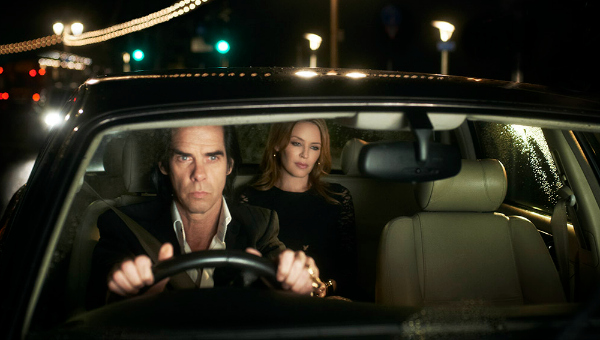
A day in the life of Nick Cave, the film follows the musician on what is presented as the 20,000th day of his existence (roughly equates to his 54.79th year). An individual portraiture, a snapshot of a person at one point of his life and career is painted, a portrait of the artist as a middle-age man (no mid-life crisis in sight).
At such a point of his life, it is inevitable that the subject of the film accumulates plenty of life experiences. We listen to Cave discussing his past, indicating on how this has informed his conception of his art. The stories and elaborations convey a man finding his purpose after having undergone various transformations through his life journey. A self-absorbed young man, forming a band initially promoted to be the most violent on Earth (which eventually rebelled to perform like a bunch of shoegazers), life as a junkie, becoming a drifter in Berlin, and now, a relative family man settling in Brighton, the film moves through them all. He is a person changed many times. Indeed, at the most superficial, his Australian accent is barely there, weathered by the English climate.
Those stories and ruminations, which form the basis of the film, are delivered through direct-to-audience voiceovers and dialogues with various interlocutors. Combined with the beautiful wide-angle cinematography, fluid editing and some imaginative montage, this arrangement prevents the film from having the feeling of a typical talking-head laden documentary. As the main point of interest himself, it helps that Nick Cave emits a sense of presence on screen. Yet, one may still feel that several conversational scenes, particularly those involving familiar faces, such as Kylie Minogue, are edited to feel like they occur in some reverie, and are just too contrived.
The dialogues heard and the actions seen feel natural, especially in the recording scenes.
However, 20,000 DAYS ON EARTH is still well designed, and far from being a straightforward documentary. It is an elaborate non-incindental construction, Nick Cave sharing the writing credit with the filmmakers, Iain Forsyth and Jane Pollard. The events happening on screen, from a morning psychotherapy to a late evening gig, are devised and staged to explore his creative process and inclination. Such film prove hard to categorise. Nonetheless, there are still some moments of vérité. Parts of the film appear to be framed, shot and edited in an observational style, akin to D. A. Pennebaker’s Bob Dylan documentary, DON’T LOOK BACK. The dialogues heard and the actions seen feel natural, especially in the recording scenes. Such scenes would normally use processed soundtracks, giving a polished feeling. These, however, feel raw, recorded through the film crew’s microphones, not the recording console. The result provides an extraordinary fly-on-the wall feeling.
There are simply no dull moments in the film, despite the lack of melodrama or dramatic exposé. One does not have to be familiar, or even like Cave’s music to be engrossed. The whole work feels and reads like an extended visual interview, drenched in adrenaline and some perception-altering substances. And, of course, the songs are superb.
httpvh://youtu.be/WDlmnXBUoH0

